Asamkirche
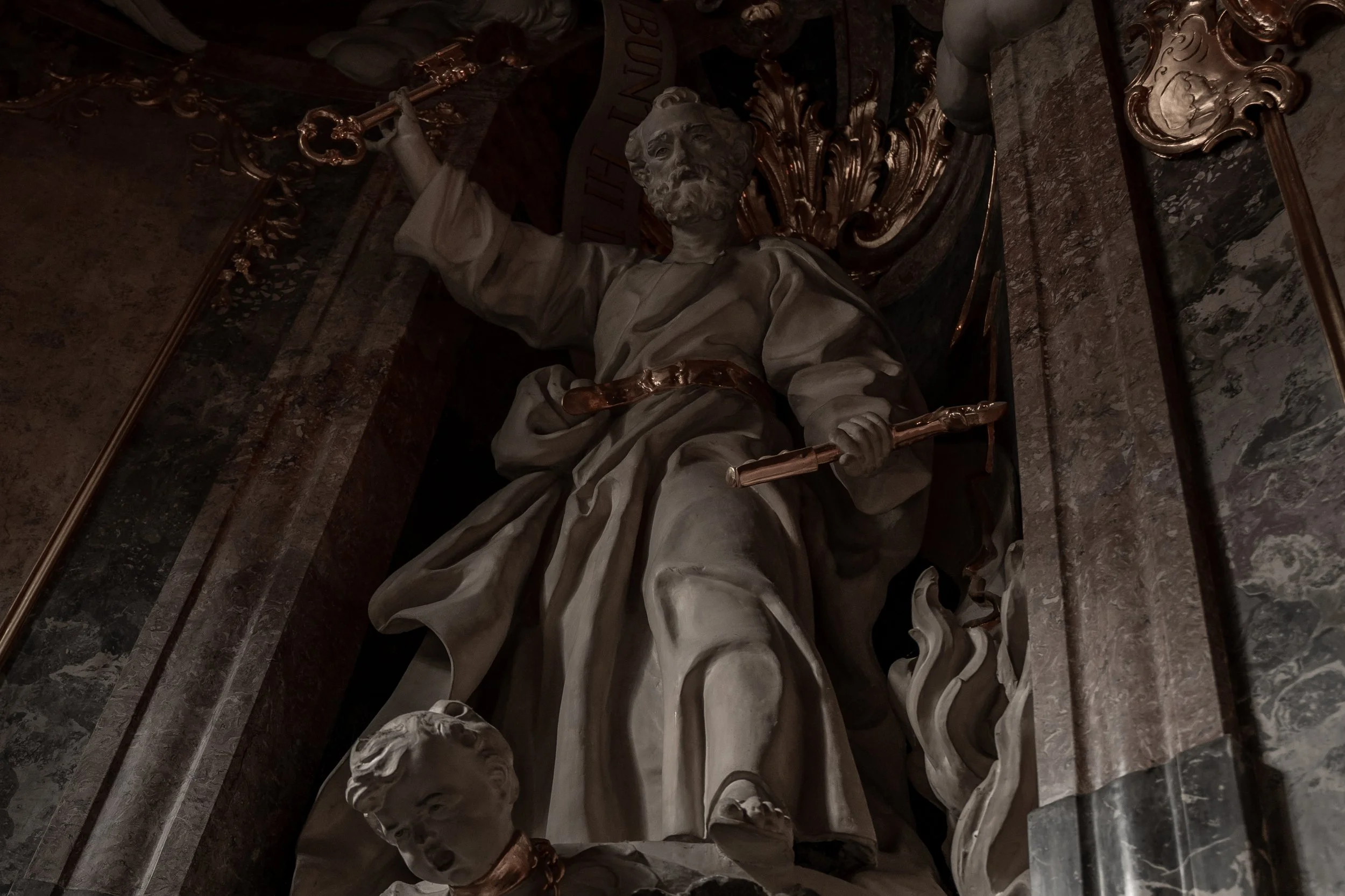
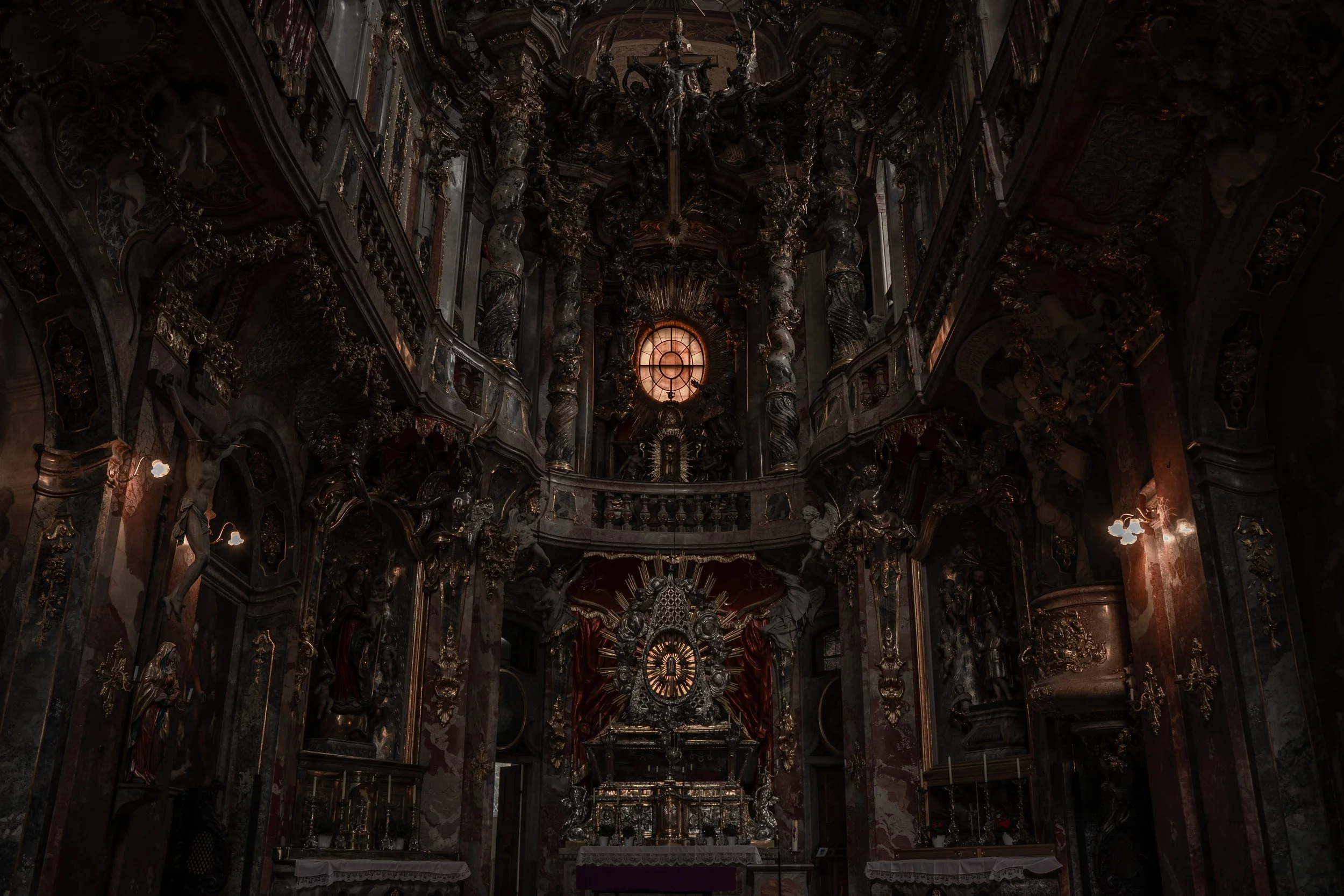

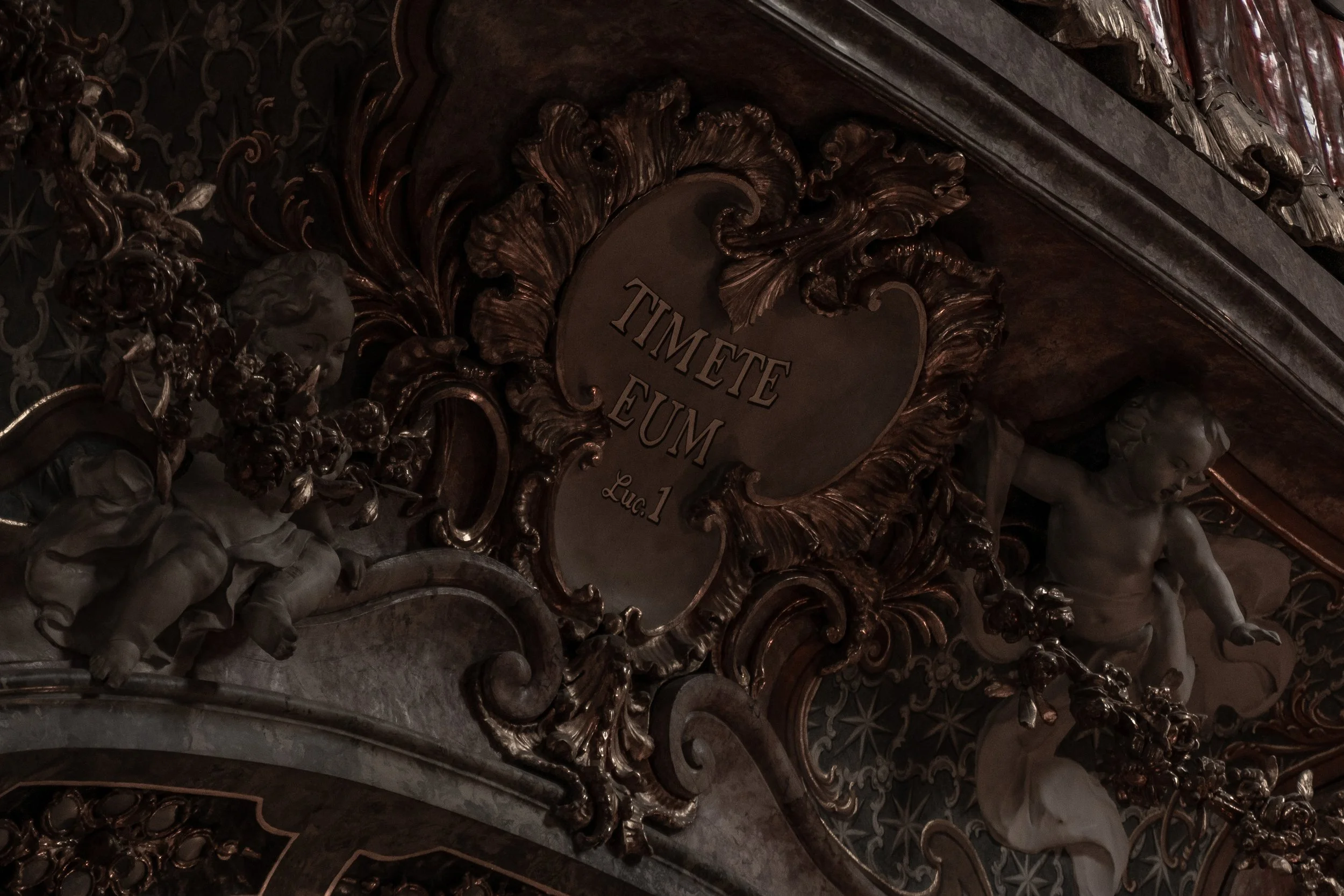
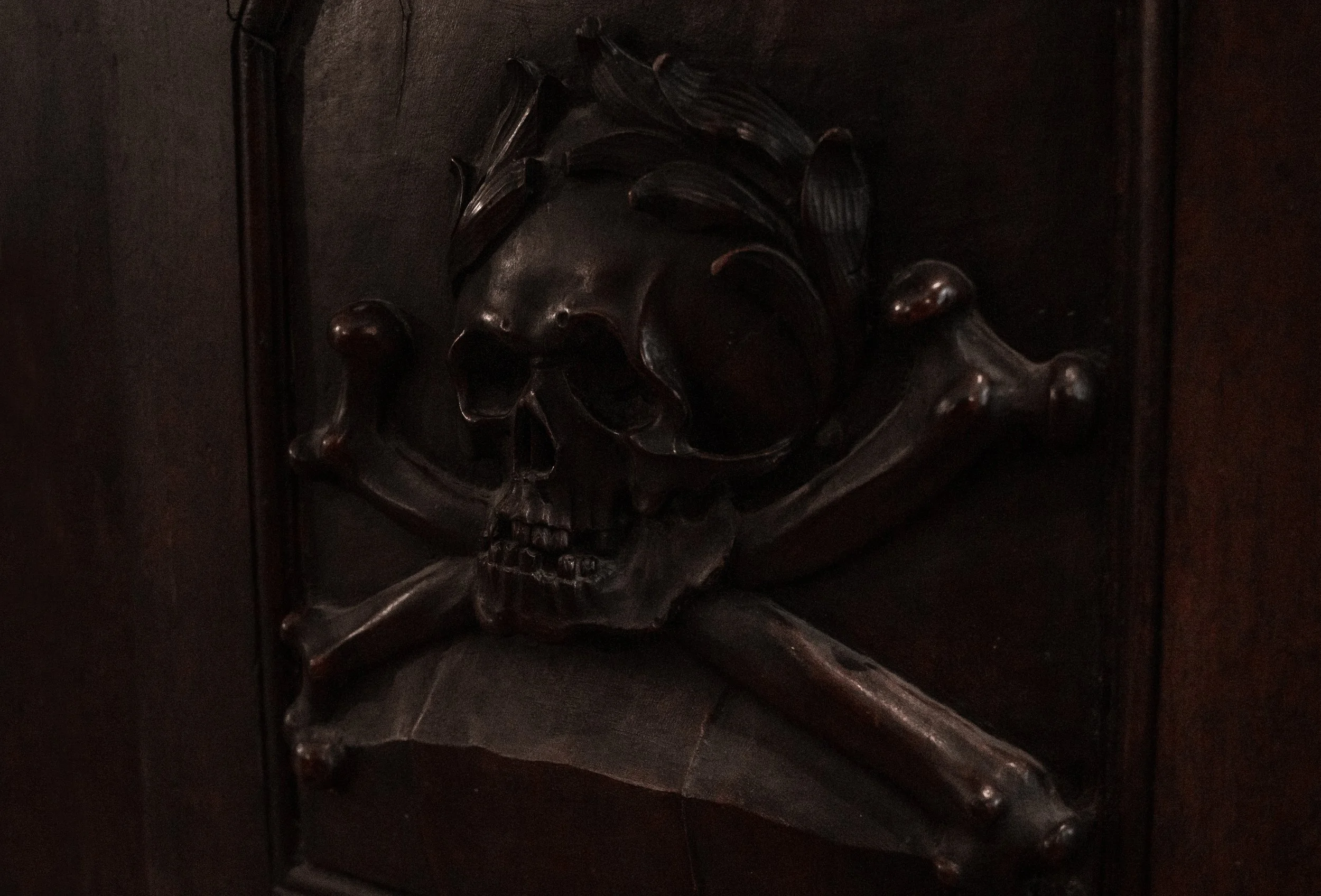
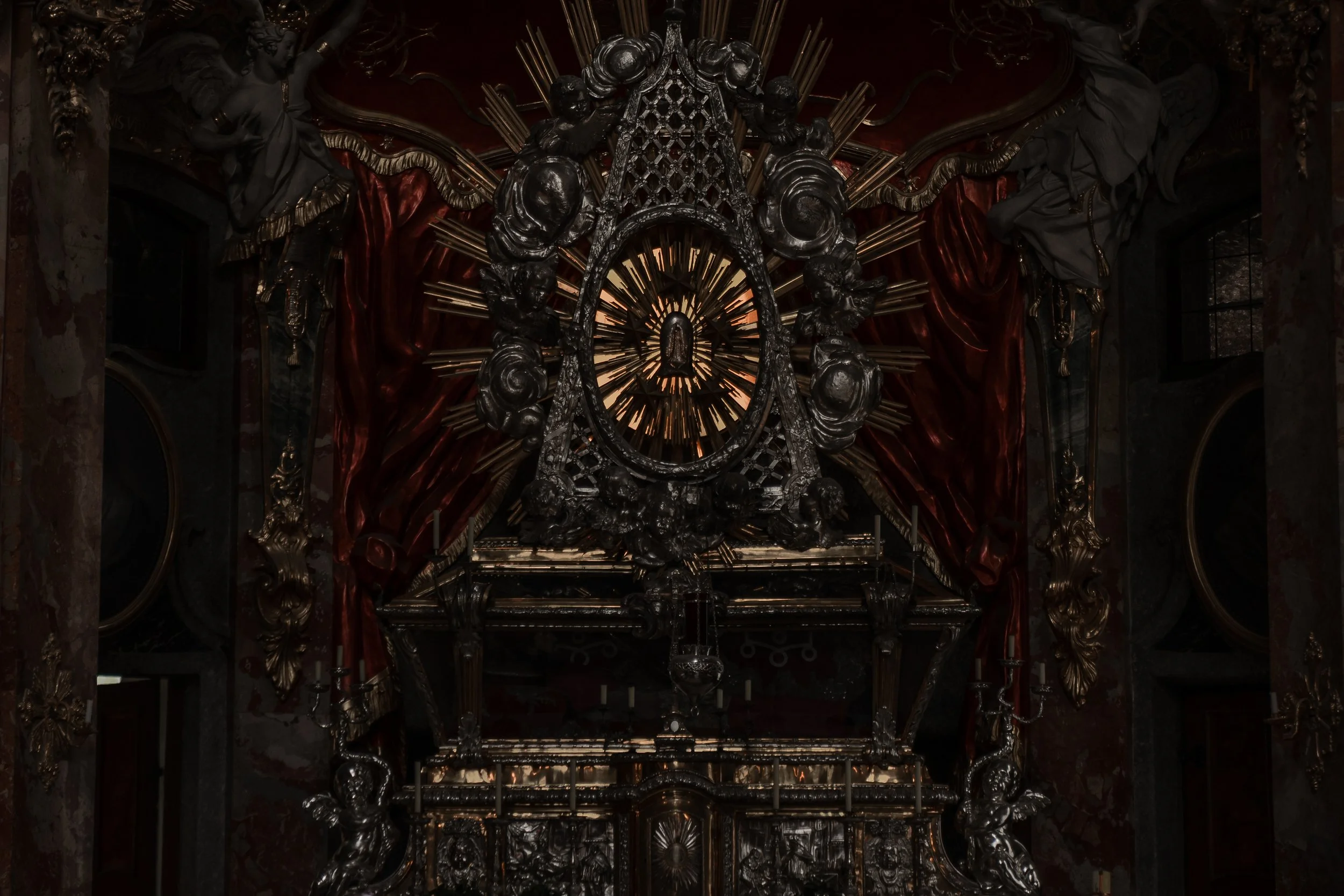
One of the smallest but most important churches in Munich, Asamkirche is a stunning jewel of late Baroque architecture. The church is tucked away behind an intriguing doorway on Sendlingerstraße and is easy to miss amid the surrounding mundane storefronts, unless you know precisely where to look.
Built between 1733 and 1746 by the visionary Asam brothers - Cosmas Damian, a painter, and Egid Quirin, a sculptor, the church was never intended for public worship. It was built as a private chapel, a personal sanctuary of devotion and artistic expression. The brothers acquired four adjoining houses and demolished the central two to create this architectural marvel. Officially named the Church of Saint Johann Nepomuk, it is more commonly known as Asamkirche in honour of its creators.
Despite its small footprint, (only 22 x 8 metres) the church is a stunning example of Late Baroque spatial design and Rococo flourishes. Educated in Rome at the prestigious Accademia di San Luca, the brothers drew inspiration from the theatrical grandeur of Gian Lorenzo Bernini. Every inch of the interior has been unapologetically overindulged with opulence, rich ornamentation and extravagant gilded touches.
As you step inside the entrance you are greeted by a golden cloaked skeleton, poised mid-motion, scissors raised to sever the “Thread of Life” held by a cherub, while a scythe rests ominously on its back. This visceral portrayal of memento mori acts as a chilling reminder that death can strike at any moment regardless of innocence or beauty.
Through the black wrought iron gates the church is vertically divided into three symbolic realms. The lower level, awash with shadows, represents the worldly suffering. Peer beside the pews and you’ll find skull carvings and ornate reminders of mortality. The middle level, highly dominated by imperial blue and white, signifies divine rule and is reserved for the Emperor. Whilst the uppermost realm, radiant and ethereal, is dedicated to God and eternity.
The dramatic ceiling fresco, painted by Cosmas Damian Asam himself, spans the entire nave and depicts the life of the church’s patron - Saint Nepomuk. This theatrical piece guides the eye from earthly suffering to salvation. In the depths of the fresco, the world is cloaked in shadow compared to at its peak, where angels burst from clouds in radiant glory and celestial hues create a crescendo of divine glory.
Light and shadow have been seamlessly incorporated into the design. Hidden windows allow sunlight to animate the interiors further and cast golden hues which give an ethereal glow. It’s wonderful to see how the Asam brothers didn’t shy away from darkness, they transcended it, reminding us that light gains meaning only in contrast. Using the technique known as ‘chiaroscuro’, the dance of light and dark, it heightens the exquisite ambience and sacred drama.
Originally designed as a ‘Beichtkirche’, a confession chapel for youth, the church features confessionals carved with scenes of Death, Hell, Judgment, and Heaven. One depicts St. Peter directing the damned to Hell whilst another portrays the Last Judgment, each created with haunting detail.
The high altar, features a glass sarcophagus containing the wax effigy of St. John Nepomuk the martyr of silence and secrecy. Swirling columns and gilded ornamentation frame the crypt which acts as a symbolic visual of faith and a reminder to us all that there is a thin veil between life and death. As there’s so much to take in, I would highly recommend sitting in the pews for a while letting the details slowly unfold.
The lavish and excessive temple was always intended as a private retreat for the Asam brothers, but due to significant public pressure they were eventually forced to open the chapel to the city. Today, it still opens daily allowing visitors to step into this baroque reverie, steeped in shadow, symbolism and golden silence.
Tip: Keep an eye out for the hung skeleton on the carved wooden front doors as you enter!
Address: Sendlinger Str. 32, 80331 München, Germany
